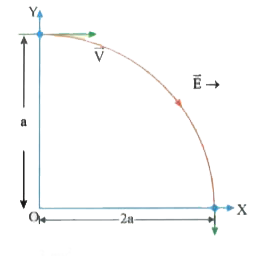A
B
C
D
Text Solution
Verified by Experts
The correct Answer is:
NARAYNA-MOVING CHARGES AND MAGNETISM-EXERCISE - 4
- A particle of charge +q and mass m moving under the influnce of a unif...
Text Solution
|
- Two coaxil solenoids 1 and 2 of the same length are set so that one is...
Text Solution
|
- A current loop ABCD is held fixed on the plane of the paper as shown i...
Text Solution
|
- A current loop ABCD is held fixed on the plane of the paper as shown i...
Text Solution
|
- A current carrying loop is placed in the non-uniform magnetic field wh...
Text Solution
|
- Electric field strength vecE = E0 hati and vecB = B0 hati exists in ...
Text Solution
|
- Two moving coil metres M(1) and M(2) have the following particular R(1...
Text Solution
|
- A circular coil of 30 turns and radius 8.0 cm carrying a current of 6....
Text Solution
|
- Two Concentric circular coils X and Y of radii 16 cm and 10cm lie in ...
Text Solution
|
- Toroid has a core (non-ferromagnetic) of inner radius 25 cm and outer ...
Text Solution
|
- A uniform magnetic field of 1*5T is in cylindrical region of radius 10...
Text Solution
|
- A cubical region of space is filled with some uniform electric and mag...
Text Solution
|
- Two long wires carrying current I1 and I2 are arranged as shown in fig...
Text Solution
|
- A current carrying loop consists of 3 identical quarter circles of rad...
Text Solution
|
- A multirange current meter can be constructed by using a galvanometer ...
Text Solution
|
- A long straight wire carrying current of 25A rests on a table as shown...
Text Solution
|
- A 100 turn rectangular coil ABCD (in XY plane) is hung from one arm of...
Text Solution
|
- A rectangular conducting loop consists of two wires on two opposite si...
Text Solution
|
- An electron and a position are released from (0, 0, 0) and (0, 0, 1*5R...
Text Solution
|
- Five long wires A, B, C, D and E, each carrying currentl I are arrange...
Text Solution
|
